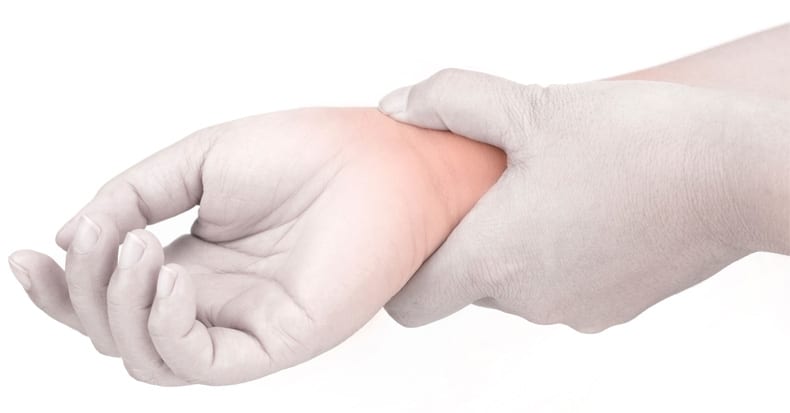Carpal tunnel syndrome (CTS) belongs to a group of disorders called “entrapment neuropathies” and as the name implies, it is caused by the trapping of the median nerve in the carpal tunnel of the wrist. There are MANY ways to treat CTS, with some of the most effective focused on reducing inflammation.
Inflammation (from the Latin inflammatio) is commonly referred to as “swelling” and is a sequence of biological responses to harmful stimuli that include pathogens such as bacteria and viruses, damaged cells, and other irritants. It is a protective response to something abnormal that has occurred and involves our immune cells, blood supply, and more. Inflammation helps to eliminate the cause of cell injury, clean up necrotic or dead cells from area, and initiate the tissue repair process.
The hallmarks of inflammation include heat, redness, swelling, pain, and loss of function. With CTS, inflammation can arise from multiple causes. One common cause is from the rapid, repetitive rubbing together of the nine tendons that travel through the already tight carpal tunnel. This “mechanical” cause can be managed by modifying the activity by slowing down, taking breaks to allow the tissues to rest, and decreasing the force required by the job or task.
The inflammation associated with CTS can also arise from other causes that are less obvious and common than trauma or overuse. Some of these include (but are not limited to) rheumatoid arthritis (and other autoimmune forms of arthritis) and hormonal changes such as an overactive pituitary gland, an underactive thyroid, diabetes, taking birth control pills, or pregnancy.
Women are three times more likely to develop CTS than men. While hormones may play a role, women also have different shaped carpal tunnels and smaller wrists. Either way, the underlying cause must be dwelt with AS SOON AS POSSIBLE to reduce the pain, numbness, tingling, and loss of function. So how can we reduce inflammation?
An ice massage applied directly over the carpal tunnel/wrist is both easy to perform and very effective. Modifying activities that may be causing or irritating CTS is important but not always available. Night splints help to prevent extreme flexion or extension of the wrist and reduces sleep interruptions common with CTS. Chiropractic utilizes all the above plus manual therapies, like joint mobilization, and exercises/stretches that can be done at home.
As the Western diet may promote inflammation, your doctor may also recommend the Paleo diet, Mediterranean diet, or a gluten-free diet to aid in the recovery process.




